Art in NYC: Felix Vallotton Exhibition at the Met Museum
The Met Museum presents Felix Vallotton: Painter of Disquiet, a retrospective of the most notable paintings and art prints depicting the fin-de-siècle Paris
On view from October 29, 2019 – January 26, 2020
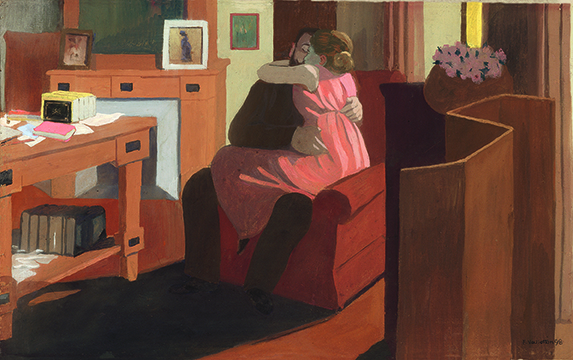
A fascinating exhibition of major works by Felix Vallotton tells a provocative story about life in Paris at the turn of the 20th century. Covering all the major phases of Vallotton’s oeurvre, the exhibition starts with his early prints and woodcuts. These early works were made at the beginning of artist’s career when he experimented with steep perspectives and flat images of the Nabis circle principles. The exhibition also showcases powerful oil paintings of the genre scenes, nudes, and landscapes of his mature period.
Well-known to art historians but not widely recognized by the public, Vallotton’s works are a mix of keen observation, wry wit, and subtle yet potent critique of the hypocrisy of bourgeoisie and the sinful pleasures of Belle Epoch France. His early prints and woodcuts made on a gamut of topics from the docile scene with music instruments to observations of everyday life to the street riots are examples of a mastery of detail and minimalist touch. While clearly demonstrating the strength of the technique, his works seemed to fall in-between the styles and artistic movements of his time. This leaves the impression that he either came too late for the expressive art of such painters like Ingre who was a strong influence for Vallotton or too early for the New Objectivity style of the 1920s.
Emphasizing his upbringing in a strict Protestant family in quiet Switzerland, the exhibition conveys Vallotton’s point of view as an outsider to the fast-moving city life. He immediately sees the dissonance between the newly established canons and their twisted morality, but is restrained in his critique. While executed with very fine detail that at times allude to the influence of the Old Masters in the use of reflections and light, the ambiguity of the scenes leave many questions unanswered. The openness to interpretation is what makes Vallotton’s art so potent. After all, this probably was the artist’s goal and he achieved it with the utmost elegance.
In addition to Vallotton’s famous woodcut cycles, there are expansive paintings of landscapes, nudes, and discrete encounters with a multitude of subtleties, mysterious perspectives, and odd angles.
Coming to New York after a triumphant show at the Royal Academy of Arts in London, this is the first retrospective of Vallotton’s work in New York in 30 years. It is organized by The Metropolitan Museum of Art, New York, and the Royal Academy of Arts, London, in collaboration with Fondation Félix Vallotton, Lausanne.
Discover this amazing artist while sampling the thrilling artworks on view at The Met. Felix Vallotton: Painter of Disquiet is on view form October 29, 2019 – January 26, 2020.
Stay in the know about future events and offers by subscribing to ARTS-NY newsletter Subscribe
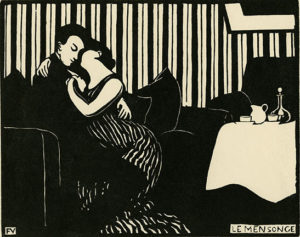
Felix Vallotton (1865-1925) moved to Paris from Lausanne, Switzerland when he was 16. There, he enrolled in Academy Julien to perfect his technical skills with the portrait painter Jules Joseph Lefebvre and the history painter Gustave Boulanger. His teachers were quite confident in his talent and assured his parents in his successful career as a painter. But Vallotton’s early works while skillfully executed demonstrated a too high degree of realism. His paintings didn’t receive much appreciation from the critics and the patrons leading him to turn his attention to prints and woodcuts.
He perfected the woodcut making technique by creating a detailed drawing first and simplifying it for the woodcut. His works started to be recognized and got the attention of the Paris art world. In the first gallery of the current exhibition at the Met, there are pairing of drawings and woodcuts for the series of musical instruments. It is fascinating to see where the artist started and how the image got realized in the print. Credited at the time as setting off the renaissance of woodcut, Vallotton’s works were widely published as illustrations for journals and books.
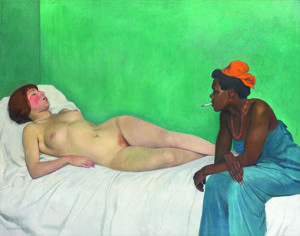
Early in his career, he was part of the Nabis circle which also included Bonnard and Vuillard among others. The Nabis which took its name from the Hebrew word “nebiim”, prophets, was a semi-secretive group of artists who deemed to be the prophets of modern art. While Vallotton was personally close to the circle’s members particularly to Vuillard, his style differed from Nabi’s demands for flat images. For that reason, he was called the Foreign Nabi. The current exhibition includes a selection of paintings from that period including works on cardboard which were particularly favored by the Nabis for their projection of flatness.
With a sudden twist of fate, in 1899, Vallotton, who worked for the left-wing journals, sympathized with the destitute, and criticized the hypocrisy of the bourgeoisie, married to Gabrielle Rodrigues-Henriques from the family of a prominent Paris art dealer. For Vallotton, the marriage provided financial security and allowed him to stop making prints to earn a living. Intimites, his most celebrated series of woodcuts and his last one, was finished right before the marriage. The eight prints, first published in La Revue Blanche journal, were made in thirty editions each. After that, the originals were destroyed by the artist. Depicting the rendezvous of lovers and couples, the works deftly convey the emotions, the lies, and moral duplicity. Once the Intimites series was completed, there was nothing left to say about infidelity and deception. With that, Vallotton exhausted the subject and turned to new topics.
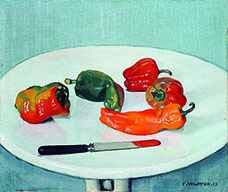
Stay in the know about future events and offers by subscribing to ARTS-NY newsletter Subscribe
In his mature years, Vallotton focused on painting. Experimenting with photographs, he would paint in his studio from the drafts and the snapshots taken outdoors. He even came up with a term for his process calling it “paysage compose.” Valuing the freedom of expression, the striking landscapes of Normandy and views of Honfleur are drawn in that style. The combination of surreal angles and the flatness of colors convey a dreary mood. Chronologically, that period falls at the beginning of WWI. Vallotton’s strong statement against the war is in the still-life Red Peppers, 1915 which looks conventional and menacing at once. Its a forceful allegory for the pain and misery.
An interesting aspect of the exhibition is a historic pairing of two portraits of Gertrude Stein. One of the portraits is done by Picasso who introduced Stein to Vallotton. Vallotton immediately asked Stein to sit for him which she had promptly done. With the two portraits made at the same time and of the same person which are exhibited here side by side, the difference in artists’ styles, egos, and perceptions is on full view. As one of the curators pointed out, the portrait by Picasso is all about Picasso while Vallotton’s is about the sitter.
The Interiors, a collection of works from a mature period in the artists’s career, are clearly calmer yet fascinating in its depiction of the scenes from the family life with its own conflicts and tensions.
Whether you are an art connoisseur or a newbie, Felix Vallotton:Painter of Disquiet is a must to see.
Dates: October 29, 2019 – January 26, 2020
Venue: The Met Museum, 1000 5th Ave, NY, NY
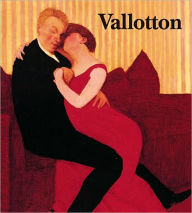
One thought to “Art in NYC: Felix Vallotton Exhibition at the Met Museum”
Comments are closed.